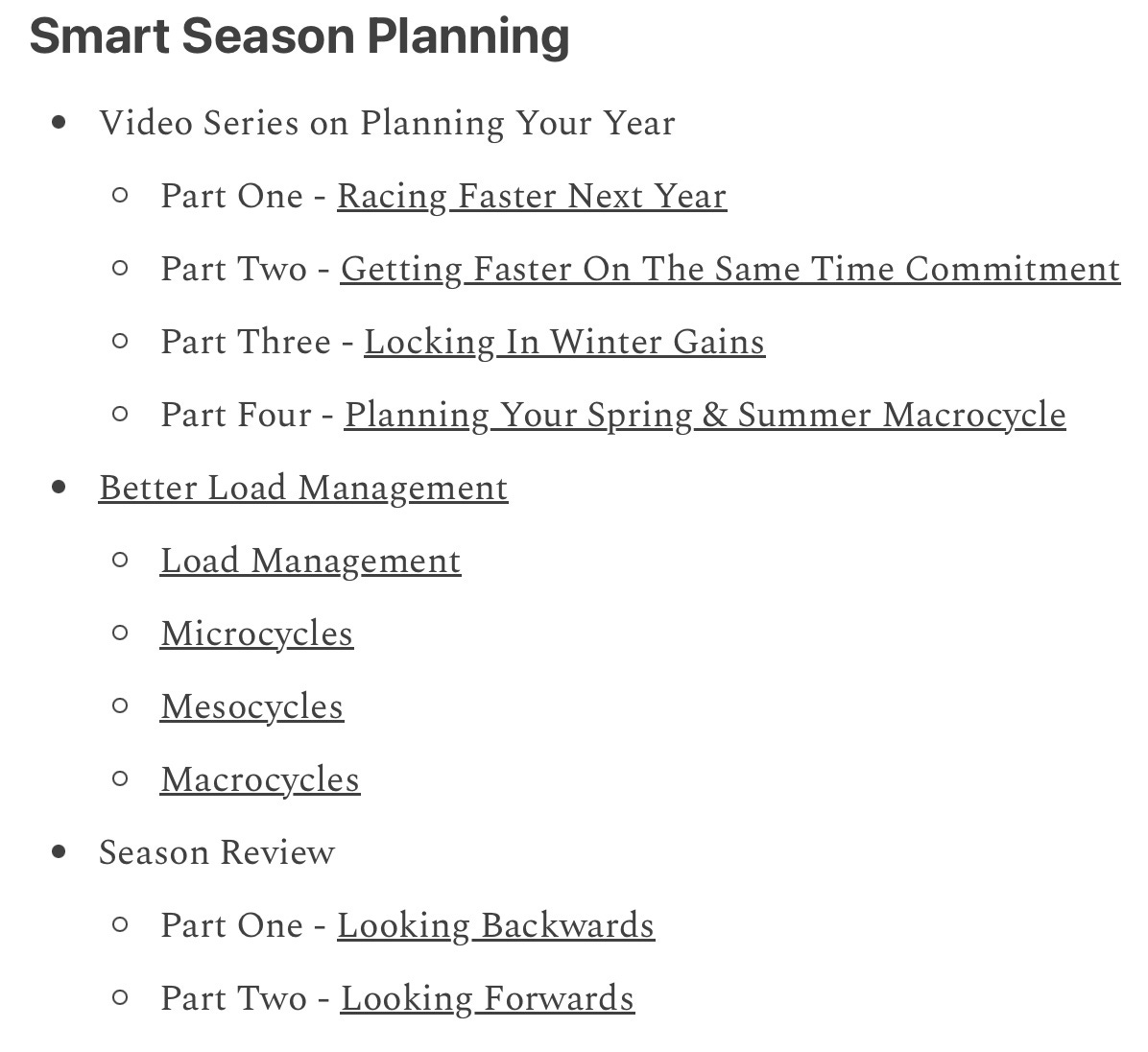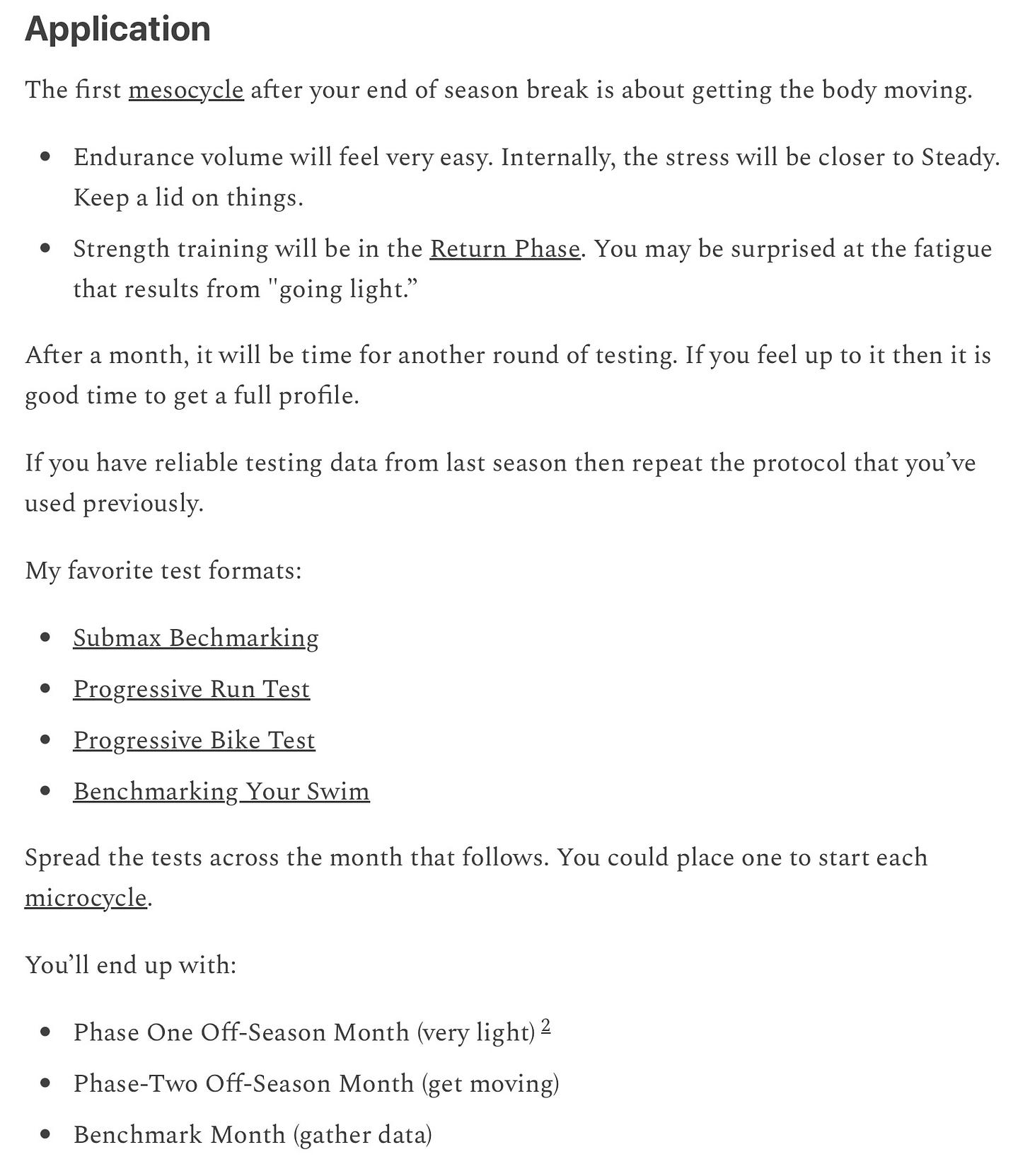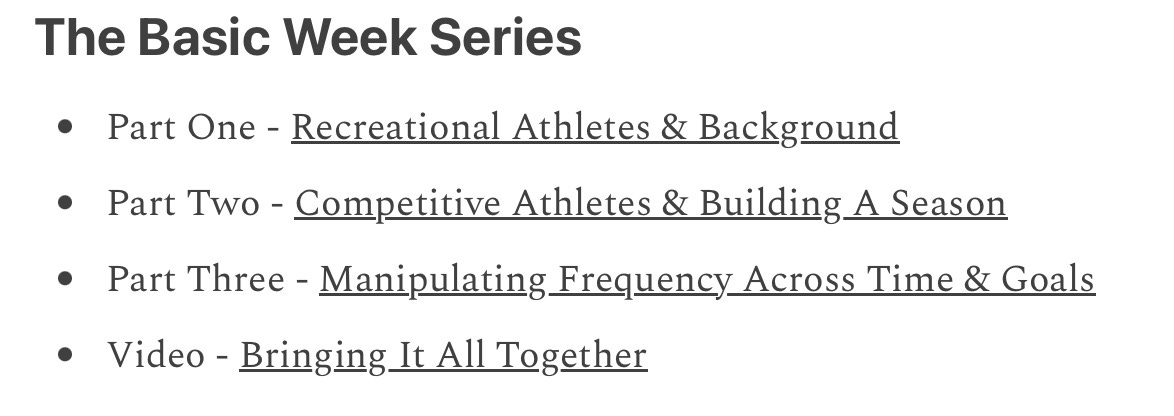First, a link to everything we already have on the site.
Year On A Page
You’ll find a simple spreadsheet here.
MAKE A COPY BEFORE YOU TRY TO EDIT
Start by putting everything you are considering into the sheet.
Travel
Holidays
School Holidays
Work Events
Family Commitments
Once that’s done, I like to color code certain things:
Sleeping At Sea Level (I’m normally at altitude in Colorado)
Driving More Than 2 Hours
Getting On A Plane
Crossing More Than Two Time Zones
Sleeping Above 6,500 feet / 2,000 meters
Then I pause and consider... how much “more” can I fit in for training camps and races.
In the video (below), I talk you through this step.
Long-Term Goals
With work, kids, family and a desire to improve… often we discover we are over scheduled before we add any races.
The video talks about the role of surfacing what’s not important to our goals.
It also discusses creating a life structure that supports our specific goal(s).
A Seasonal Focus
Let’s walk through an entire year, starting with the “off-season.”
The picture (below) shows the off-season is really a 13-week block, usually in Fall. In this block we:
Shed Accumulated Fatigue
Progress Our Non-Training Life
Establish Health Baselines
Establish Training Baselines
The next phase sees us through winter. I recommend an Anabolic Phase, one that leaves you strong, healthy and looking forward to the natural up-swing that arrives in Spring.
As we move into Spring, we add:
Long Days
Green Zone Volume, especially Cycling
Late-Spring is an excellent time to place a volume-oriented training camp. If you want to travel to a nice climate then do a training camp1, rather than a low-priority race. This advice is an extension of my mantra, don’t trade volume for intensity.
The critical success factor missing in many programs is Green Zone Volume. Training camps address this limiter.
A core part of my elite, and amateur, success was a commitment to year-round training camps. They are also where I generated my best memories and made lifelong friendships.
Moving into Summer:
Pause
Consider When You’d Like To Peak
If you are aiming for a late-season peak then the most important considerations are:
An Early Summer Unload
A Return To Base
Not Overdoing The Specific Preparation
Once we are really “fit” from a General Capacity point of view… it does not take long to get race ready. I gave you detailed Specific Preparation implementation tips in the Basic Week Series that I won’t repeat here.
Across the entire year, bear this tip in mind…
Green Zone mistakes clear relative quickly
Red Zone mistakes can end your season
Make sure you have your zones set correctly and be humble with the application of high intensity.
Stacking The Deck
With race placement, know your:
Natural Peak Timing - yes, you have one
Local Climate - don’t fight it
Local Terrain - work with what you’ve got
Then fit a limited number of events into where/when you are most likely to succeed.
The video (below) brings this entire article together with a case study on my personal race placement.
In my Annual Plan:
One True Peak A Year
Nearly Always Building General Capacity
Comments are open for the Paid List. I’m here to help.
Back to Table of Contents
The embedded link is a how-to-manual for Training Camps. From the top of that article, you will find a link to a before/during/after checklist that you should review before/during/after your training camp.








Hi Gordo,
So not trained for 3 months, after many years of hard training,but am now determined to get back into the exercise. How would you start back? I have booked a half Ironman in May
Cheers
Steve